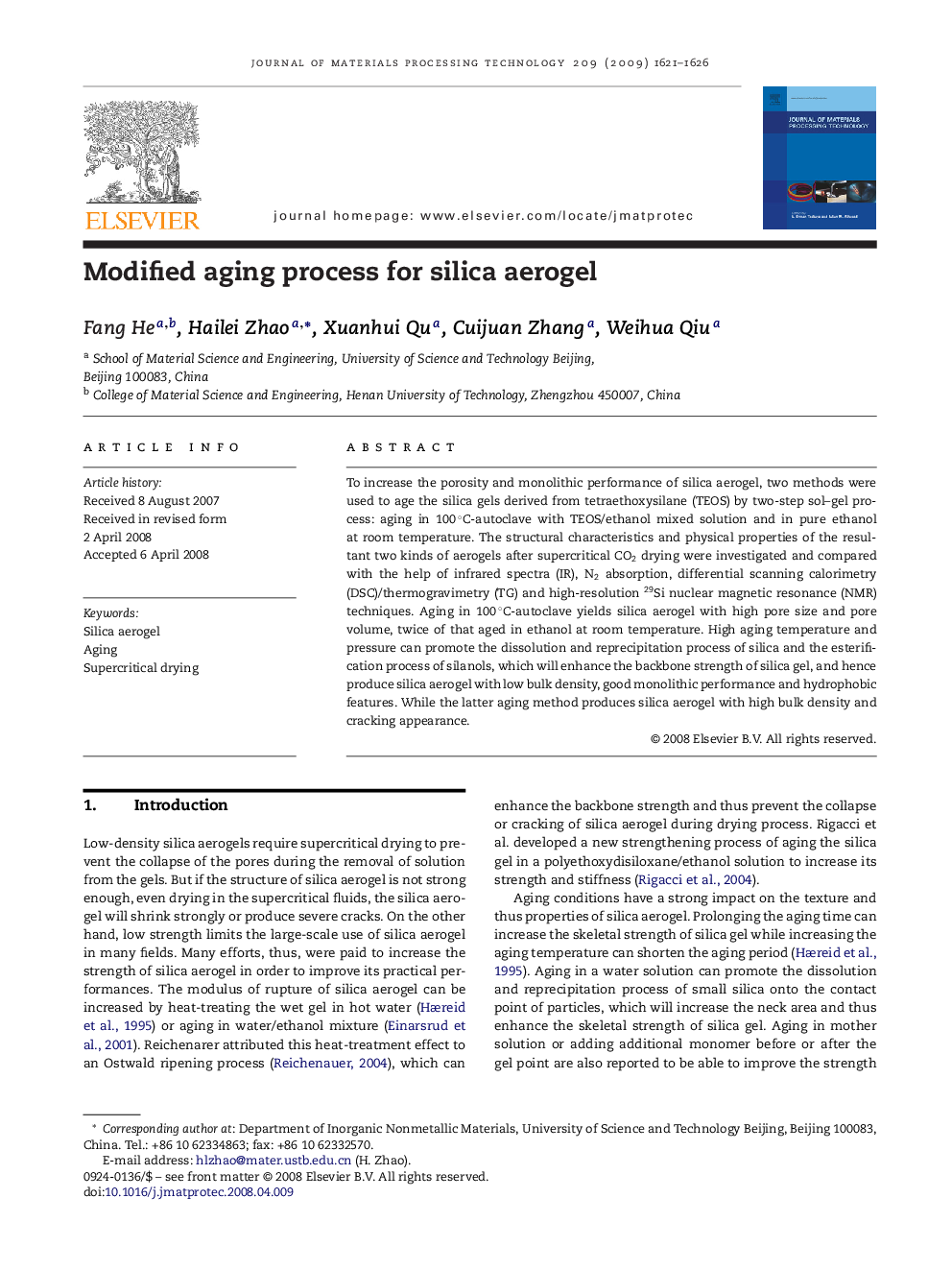| Article ID | Journal | Published Year | Pages | File Type |
|---|---|---|---|---|
| 791544 | Journal of Materials Processing Technology | 2009 | 6 Pages |
To increase the porosity and monolithic performance of silica aerogel, two methods were used to age the silica gels derived from tetraethoxysilane (TEOS) by two-step sol–gel process: aging in 100 °C-autoclave with TEOS/ethanol mixed solution and in pure ethanol at room temperature. The structural characteristics and physical properties of the resultant two kinds of aerogels after supercritical CO2 drying were investigated and compared with the help of infrared spectra (IR), N2 absorption, differential scanning calorimetry (DSC)/thermogravimetry (TG) and high-resolution 29Si nuclear magnetic resonance (NMR) techniques. Aging in 100 °C-autoclave yields silica aerogel with high pore size and pore volume, twice of that aged in ethanol at room temperature. High aging temperature and pressure can promote the dissolution and reprecipitation process of silica and the esterification process of silanols, which will enhance the backbone strength of silica gel, and hence produce silica aerogel with low bulk density, good monolithic performance and hydrophobic features. While the latter aging method produces silica aerogel with high bulk density and cracking appearance.
